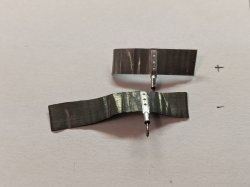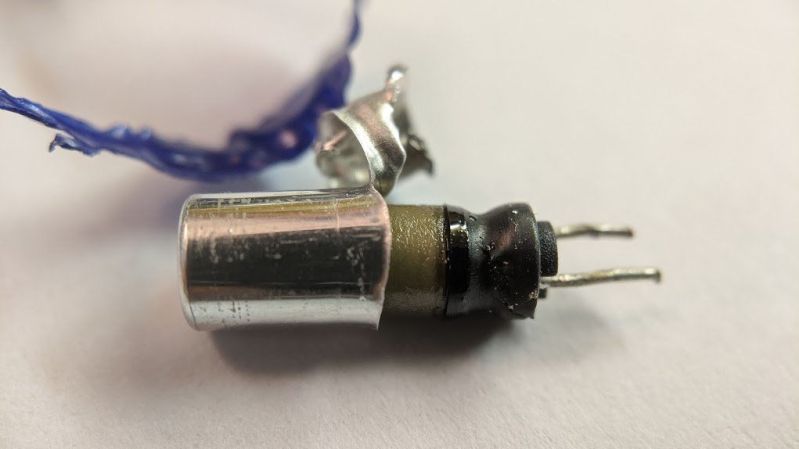When we remove the enclosure of modern electronics, we see a lot of little silvery cylinders wrapped with heat shrink plastic. These aluminum electrolytic capacitors are common residents on circuit boards. We may have cut one open to satisfy our curiosity of what’s inside, but that doesn’t necessarily mean we understood everything we saw. For a more detailed guided tour, follow [TubeTime]’s informative illustrated Twitter thread.
Electronics beginners are taught the basic canonical capacitor: two metal plates and an insulator separating them. This is enough to understand the theory of capacitor operation, but there were hints the real world is not quite that simple. We don’t even need to disassemble an electrolytic capacitor to get our first hint: these cylinders have markings to indicate polarity, differentiating them from the basic capacitor which is symmetric and indifferent to polarity. Once taken apart and unrolled, we would find two thin aluminum foils separated by a sheet of paper. It would be tempting to decide the foil were our two plates and the paper is our insulator, except for the fact those two metal plates are different sizes further deviating from the basic capacitor.
Electronics veterans know the conductor–insulator–conductor pattern is not foil–paper–foil, but actually foil–oxide–electrolyte. But there is more to [TubeTime]’s tour than this answer, which includes pictures of industrial machinery, a side adventure in electrolytic chemistry using a tiny glass beaker, concluding with links to more information. And once armed with knowledge, we can better understand why electrolytic capacitors don’t necessarily need to be replaced in old equipment and appreciate them within the larger history of capacitors context.

















Related to this:
BigClive fills (dry_ electrolytic capacitors with a homebrew electrolyte:
https://www.youtube.com/watch?v=IAQClL3bZzg
About 40 Twitterposts…yeah, no.
Here’s a better link:
https://threadreaderapp.com/thread/1277408230910554112.html
One of my favorite changes in newer tech is the fact that lots of designs can be completely ceramic. I haven’t used one of these for much of anything except repairs, and DC motors in a while.
Gotta watch out for those inductive inrush transients, but you can usually knock those down with a suitable TVSS diode and a higher voltage rating regulator, and have a better product than before.